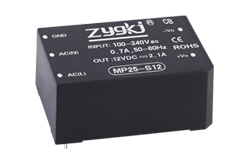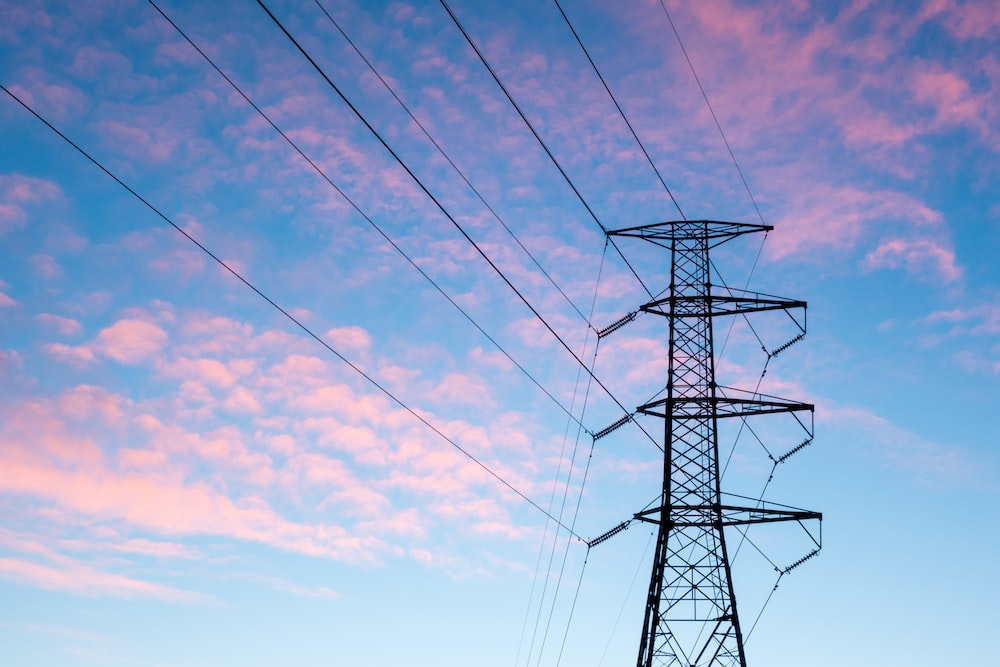소식
Design and Analysis of Bidirectional DC-DC Converter for Efficient Power Conversion
저자: ZYG 전원 모듈 Time: 2023-6-26
In modern power systems, the use of renewable energy sources and energy storage systems has increased significantly. The integration of these sources into the grid has resulted in the need for efficient power conversion solutions. Bidirectional DC-DC converters are an essential component in power systems that facilitate the efficient transfer of power between different DC sources and energy storage systems. In this article, we will explore the design and analysis of a bidirectional DC-DC converter for efficient power conversion.
Design of Bidirectional DC-DC Converter
The bidirectional DC-DC converter is used to transfer power between two DC sources, which can be a battery and a grid or two different batteries. The converter consists of four power switches, two inductors, two capacitors, and a control circuit. The circuit topology used in the converter is a full-bridge, which is commonly used for bidirectional power conversion.
The design of the converter involves selecting the values of the components such that they meet the specifications of the power system. The switching frequency of the converter is one of the critical parameters that affect the performance of the system. A higher switching frequency leads to reduced size and weight of the components but increases the switching losses. Hence, the switching frequency is selected based on a trade-off between efficiency and size.
The selection of the inductance and capacitance values is another critical aspect of the design. The inductors are used to store and transfer energy, while the capacitors are used to filter out the high-frequency components of the output voltage. The inductance value is selected such that it provides enough energy storage and reduces the ripple in the output voltage. The capacitance value is chosen based on the required output voltage ripple and the switching frequency.
Analysis of Bidirectional DC-DC Converter
The analysis of the bidirectional DC-DC converter involves determining the efficiency, voltage and current ripple, and the transient response of the system. The efficiency of the converter is affected by the conduction and switching losses of the power switches, the resistance of the inductors and capacitors, and the magnetic core losses of the inductors. The efficiency can be improved by selecting high-performance power switches, reducing the resistance of the components, and optimizing the magnetic core design.
The voltage and current ripple in the output of the converter are undesirable and can cause issues with the performance of the downstream system. The ripple can be reduced by selecting appropriate filter components and optimizing the control algorithm of the converter. The transient response of the converter is the time taken by the system to respond to a change in the input or output voltage. The transient response can be improved by selecting appropriate values of the inductance and capacitance and by optimizing the control algorithm.

결론
In conclusion, bidirectional DC-DC converters are an essential component in power systems that facilitate the efficient transfer of power between different DC sources and energy storage systems. The design and analysis of the converter involve selecting appropriate values of the components and optimizing the control algorithm to meet the specifications of the power system. The efficiency, voltage and current ripple, and the transient response are critical parameters that affect the performance of the converter. Proper design and analysis can lead to a highly efficient and reliable bidirectional DC-DC converter for efficient power conversion.
이전의: Medical Power Series: Empowering Healthcare Professionals and Patients for Better Health
다음: 24V AC to DC Converter: Efficiently Transforming Alternating Current to Direct Current
관련 정보
-
2023-11-15
Module Power Supply: Efficient and Reliable Source of Electrical Energy
Introduction: In today's fast-paced world, the demand for electrical energy is continuously increasing. From powering our homes to running industrial machinery, electricity has become an indispensable part of our lives. However, ensuring a reliable and efficient source of electrical energy is crucial to meet this growing demand. This is where module power supplies come into play. This article aims to explore module power supplies and highlight their significance in providing efficient and reliable electrical energy. What is a Module Power Supply? A module power supply refers to an electronic device that converts electrical energy from a power source into the desired voltage and current levels required by the load. It consists of various components such as transformers, rectifiers, capacitors, and...
세부 정보보기 -
2023-7-12
AC DC Converter SPM Series: Efficient Power Conversion for Your Electronics
Introduction: In today's digital age, electronic devices have become an integral part of our lives. From smartphones to laptops, from televisions to refrigerators, we depend on these devices for our daily activities. However, all these devices require power to function, and that's where AC/DC converters come into play. The SPM Series AC/DC converter is a cutting-edge solution that offers efficient power conversion for your electronics. Let's delve deeper into its features and benefits. Efficiency and Reliability: One of the key features of the SPM Series AC/DC converter is its high efficiency. With an efficiency rate of up to 95%, the converter minimizes power loss, resulting in lower energy consumption and reduced electricity bills. Its advanced design ensures stable and reliable...
세부 정보보기 -
2023-5-12
24V AC to DC Converter: Converting Alternating to Direct Current
Introduction In today's world, electricity is an integral part of our daily lives. It powers almost everything we use, from the lights in our homes to the computers we work on. However, the electricity we use is not always in a form that we can use. Alternating current (AC) is the form of electricity that is typically supplied by power companies, while most of our devices and appliances require direct current (DC) to operate. This is where a 24V AC to DC converter comes in handy. What is a 24V AC to DC Converter? A 24V AC to DC converter is a device that converts alternating current (AC) into direct current (DC). It takes in AC power and outputs DC...
세부 정보보기 -
2023-5-3
AC-DC Converter Circuit: Design and Implementation
AC-DC Converter Circuit: Design and ImplementationAn AC-DC converter circuit is a device that converts alternating current (AC) to direct current (DC). This type of circuit is commonly used in electronic devices to provide power for their internal components. In this article, we will discuss the design and implementation of an AC-DC converter circuit.DesignThe first step in designing an AC-DC converter circuit is to determine the requirements of the circuit. This includes the input voltage and frequency, output voltage and current, and any other specifications that are required for the specific application.Once the requirements have been determined, the next step is to choose the appropriate circuit topology. There are several different topologies that can be used for an AC-DC converter circuit,...
세부 정보보기 -
2023-4-22
AC-DC Power Supply: Providing Efficient and Reliable Energy Conversion
AC-DC power supplies are essential components in a wide range of electronic devices, from smartphones and laptops to industrial machinery and medical equipment. These power supplies perform the crucial function of converting AC (alternating current) power from the mains supply into DC (direct current) power that can be used by electronic circuits. They are designed to be efficient, reliable and safe, and they play a critical role in ensuring the proper operation of electronic devices. The basic function of an AC-DC power supply is to convert AC power from the mains supply into DC power that can be used by electronic circuits. The mains supply typically provides AC power at a voltage of 110 or 220 volts, depending on the...
세부 정보보기 -
2023-3-31
Quality Control in DC-DC Converter Manufacturing: The Role of the Factory
Quality control is an essential aspect of any manufacturing process, and DC-DC converter manufacturing is no exception. DC-DC converters are electronic devices that convert DC voltage from one level to another, and their quality is critical in many applications, including telecommunications, data centers, and medical devices. The role of the factory in ensuring the quality of DC-DC converters cannot be overstated, as they are responsible for implementing and monitoring quality control measures throughout the production process. In this article, we will discuss the role of the factory in quality control in DC-DC converter manufacturing, including the measures they take to ensure that the products meet the highest quality standards. Quality Control Measures in DC-DC Converter Manufacturing The quality...
세부 정보보기


















